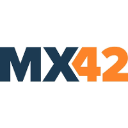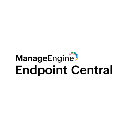
Matrix42 Service Management : Streamline IT Service Management for Enhanced Efficiency
Matrix42 Service Management: in summary
Matrix42 Service Management is an advanced IT service management solution designed for businesses of all sizes. Its intuitively automated service delivery processes, user-friendly interface, and integration capabilities set it apart from competitors, making it ideal for IT departments seeking to optimise productivity and deliver better service experiences.
What are the main features of Matrix42 Service Management?
Automated Service Delivery
Matrix42 Service Management offers revolutionary automated service delivery to minimise manual interventions, ensuring efficiency in IT operations.
- Workflow Automation: Define and manage workflows to streamline IT service tasks.
- Self-Service Portal: Empower users to solve their own issues with an intuitive self-service portal.
- Triggered Actions: Automate responses based on specific events or conditions.
Integrated IT Asset Management
Unified asset inventory and tracking system integrated to provide a complete overview of IT assets, helping manage resources more effectively.
- Asset Tracking: Continuously monitor all IT assets in real-time.
- CMDB: Maintain a thorough Configuration Management Database to track configurations and relationships.
- Lifecycle Management: Oversee the entire lifecycle of IT assets, from purchase to retirement.
Comprehensive Incident & Problem Management
Matrix42 ensures that incidents are proactively managed to resolution with innovative problem-solving tools.
- Incident Tracking: Efficiently manage, track, and resolve IT incidents.
- Root Cause Analysis: Identify the fundamental cause of issues to prevent recurrence.
- Customizable SLAs: Define and manage service level agreements to meet business performance expectations.
Its benefits
ISO 27001, ISO 9001, GDPR
Matrix42 Service Management: its rates
standard
Rate
On demand
Standard
Rate
On demand
Clients alternatives to Matrix42 Service Management

Streamline your IT service management with easy-to-use software that simplifies ticket management, asset tracking, and reporting.
See more details See less details
Freshservice offers a user-friendly interface that streamlines IT service management processes. With features such as automated ticket assignment, asset tracking, and customisable reports, this software makes it easy to manage and track IT service requests.
Read our analysis about FreshserviceBenefits of Freshservice
Extensive no-code automation
Integrated AI with Freddy Copilot
Unified service and asset management
To Freshservice product page

Achieve seamless IT management with comprehensive monitoring, software deployment, patch management, and remote control features.
See more details See less details
ManageEngine Endpoint Central offers versatile capabilities for IT management, including comprehensive monitoring of endpoints, efficient software deployment across various devices, effective patch management to ensure security compliance, and remote control functionality for troubleshooting. Its intuitive interface simplifies the management process, enabling IT teams to streamline operations and enhance productivity. This platform is ideal for organisations looking to optimise their IT infrastructure while minimising downtime.
Read our analysis about ManageEngine Endpoint CentralTo ManageEngine Endpoint Central product page

ITSM software with powerful incident management, asset management, and SLA tracking capabilities.
See more details See less details
Easily manage IT requests with automated workflows and customisable forms. Keep track of assets and their history, while ensuring compliance with industry standards. Monitor and meet SLAs with real-time tracking and reporting.
Read our analysis about ManageEngine Servicedesk PlusBenefits of ManageEngine Servicedesk Plus
ITSM best practices
ITAM
Strong customer focus
To ManageEngine Servicedesk Plus product page
Appvizer Community Reviews (0) The reviews left on Appvizer are verified by our team to ensure the authenticity of their submitters.
Write a review No reviews, be the first to submit yours.